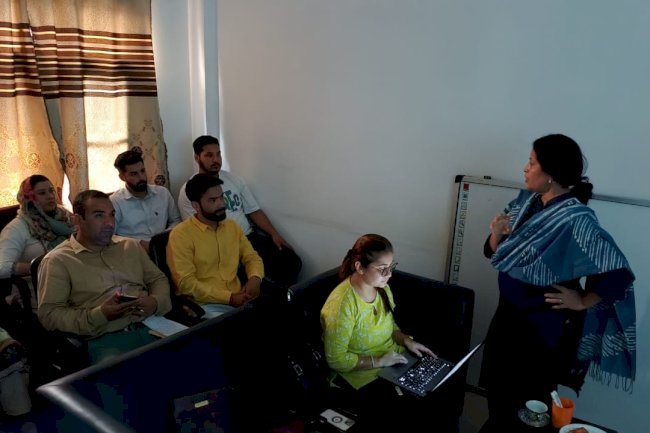‘Children’s engagement with learning is disrupted during the pandemic-related school closure’: states GRAAM’s study
The objective of the study was to understand the effect of school closure in the routine of children, how children spend their time at home, to specifically understand how much time is dedicated for learning/education.

‘Only 15% of government school children in rural areas are engaged in some form of learning during school hours, while others are busy with mobile phones or watching television,’ stated a study titled, ‘A Study to Understand the Activities Engaged by Rural Government School Children at home due to COVID lockdown,’ conducted by GRAAM.
This study was conducted in 53 villages of Mysuru, covering 07 village panchayats with 397 children (class 5th – class 10th) enrolled in government school, participating in the study. The study was conducted in July2021- Aug 2021, during the time when educationists were advocating for the importance of reopening schools after the prolonged school closure due to the pandemic-induced lockdown.
The objective of the study was to understand the effect of school closure in the routine of children, how children spend their time at home, to specifically understand how much time is dedicated for learning/education. The striking response that was overwhelming was that 100% children responded that they wanted the schools to reopen. “Missing socialization with friends, concentrating towards learning is very difficult when at home, emotionally feeling low, forgetting learnings from earlier classes, affecting our self-confidence…” etc., were among the reasons cited by children while vouching for schools to reopen.
The challenges of attending online classes are depicted below:
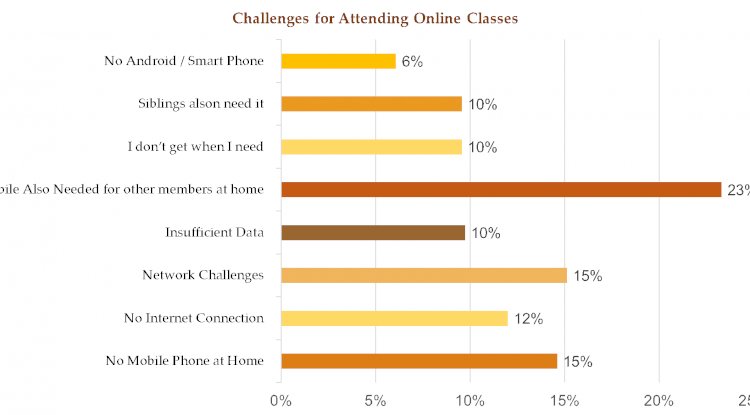
According to the survey, only 15% of the children achieve some form of learning during school hours, including through TV, online classes or reading. It reaches a maximum of 23.8% between 6pm - 9pm. The normal activity of children is either watching TV or engaging with mobile phones. It reaches the peak of 42% in the evening and during class hours on an average, 29% children are involved in this activity. Girls seem to be more engaged in household chores early in the morning and late in the evening. The other major activity that children are involved in is playing (indoor and outdoor). Few of them are. During school hours, around 27% of children are also engaged in yoga in the morning.
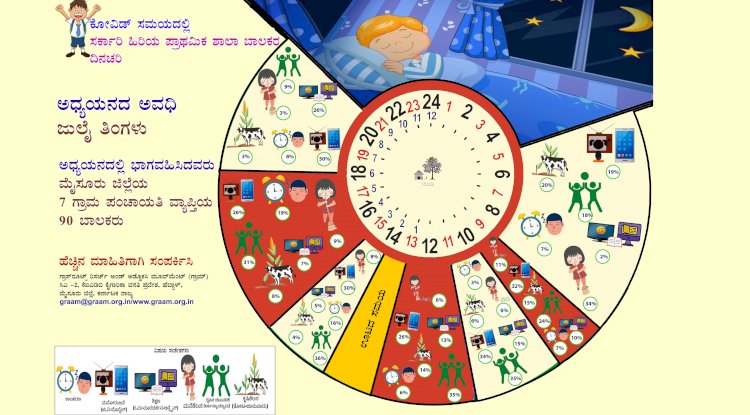
High School (HS), i.e., 8th grade to 10th grade boys are engaged with agriculture (23%) and household chores (49%) in the morning. During school hours, only 13% - 16% HS boys are engaged in some form of learning. It reaches its peak to 32% only in the evening hours. Most HS boys spend their time watching TV/mobile for entertainment purposes (24%) and in play (24%) during the class hours i.e., 10 am to 5 pm.
Like HS boys, HS girls spend more time on TV/Mobile for entertainment (29% on an average, and 32% during class hours). However, HS girls have dedicated relatively more time for learning compared to boys (26%). Girls’ engagement in physical activity is very less, i.e., 11%. It’s more indoor than actual outdoor physical activities (playing/exercise). Their average engagement with household chores is 30% and it goes to peak (78%) in the morning and 58% in the evening. HS girls’ engagement in agriculture is very less.
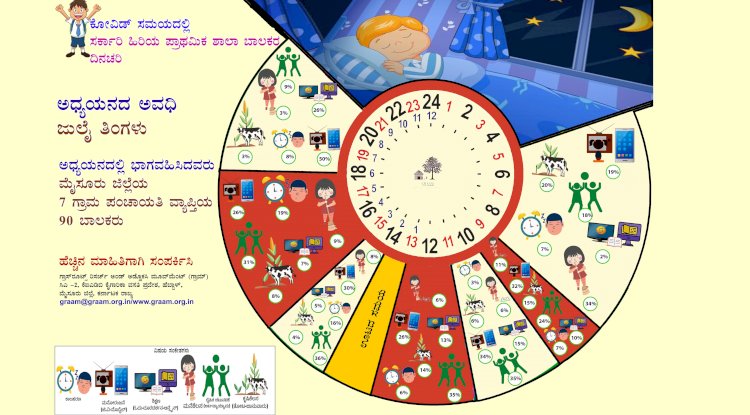
Higher Primary School (HPS), i.e., 5th grade to 7th grade boys are engaged in agriculture (10%) and household work (11%) in the morning. During school hours, only 10% of children are engaged in some form of learning activity. It reaches a peak of 26% only in the evening hours. Most HPS boys were spending their time watching TV / Mobile for entertainment purposes (29%) and in play (34%) during class hours (10 am to 5 pm).
HPS girls (like boys) spend more time on TV/Mobile for entertainment (31% on an average, and 29% during class hours). Their engagement in physical activity is better compared to HS girls and almost equal to their counterparts (32%), but unfortunately it is during class hours. Their average engagement with household chores is 24% and it goes to peak (63%) in the morning and 26% during the evening. HPS girls’ engagement in agriculture is very less.
It’s heartening to see that the children are being affected emotionally, physically and more importantly educationally. In the long run this will be dearer to the development of children and the country as well. Most children are spending their precious time of life watching television, mobile phones and basically doing nothing.
It’s also observed in the field that close to 15% HS children are engaged in wage employment, which is indeed a concern. Once children start earning, their interest to learn diminishes. Considering the larger challenges of today and the country's future, GRAAM stressed on the need to initiate higher primary schools as well in a systematic manner by taking due care.
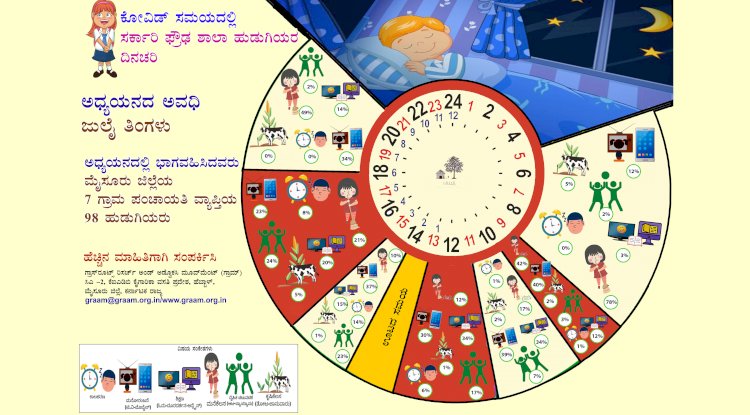
This study also throws light to the gender perspective too. It is observed that the household chores are the responsibility of girl children and agricultural activities are that of boys. HS girls spend their time at home with almost no participation in play/ physical activities, largely. Whereas boys spend a good amount of time outside.
It is thus important to take policy decisions at the earliest to create learning opportunities for children. Education department should initiate educational outreach activities to ensure that all children are back to school or are at least engaged in learning for a few hours as otherwise, it will be almost impossible to bridge the learning gap of two years.
What's Your Reaction?








